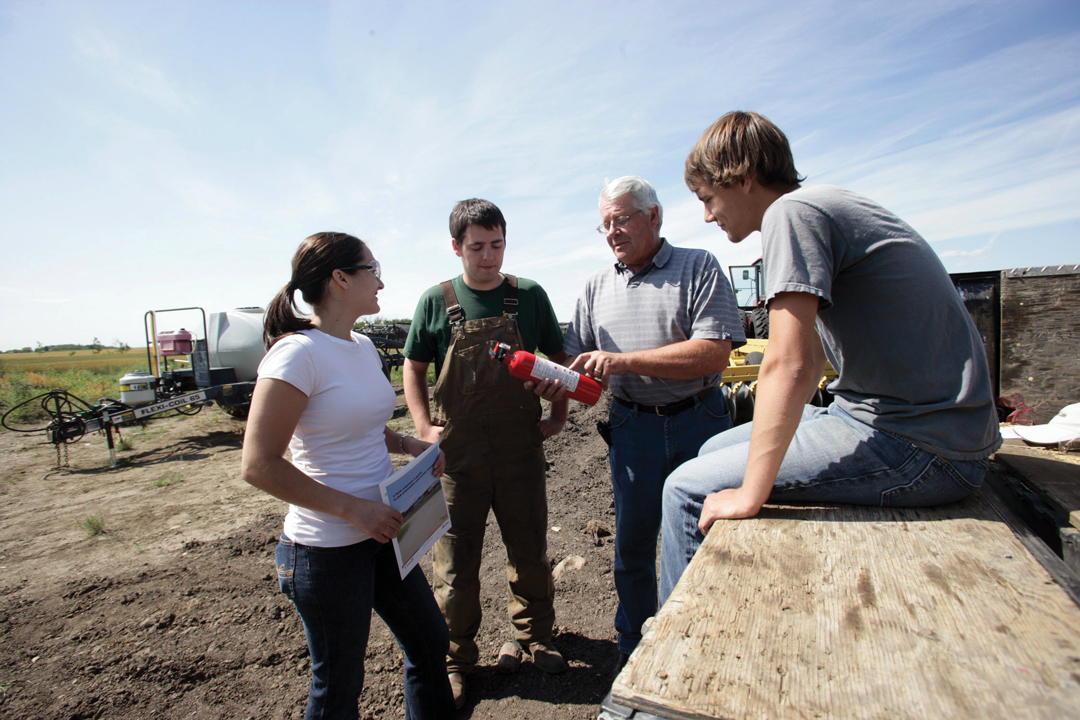OVERCOMING SAFETY HURDLES
BY TIMOTHY FOWLER • PHOTO COURTESY OF ALBERTA AGRICULTURE AND FORESTRY
Sometimes you need a hand to navigate new hurdles. Farms and ranches that employ one or more waged, non-family worker face the challenge of upgrading equipment and training to meet Occupational Health and Safety Code industry standards that came into effect Dec. 1, 2018. On Oct. 15, 2018, the Alberta government launched the Farm Health and Safety Producer Grant, a cost-sharing initiative that matches dollars for approved equipment upgrades and specific projects designed to make employees safer.
Up to $6 million is available through the grant process to help qualified farmers until Mar. 2, 2021. Expenses incurred since Jan. 1, 2018, and that meet the submission criteria, are covered by the program. The annual maximum is $5,000 per applicant to a limit of $10,000 over the life of the program.
The government’s intent is to help farmers take on this obligation, according to Oneil Carlier, Alberta’s minister of agriculture and forestry. “We understand these changes are new for farmers and ranchers and we are committed to working with them to implement effectively,” he said. “We will also continue working with AgSafe Alberta to ensure the resources and supports farmers and ranchers need are available.”
AgSafe was formed by crop and livestock groups to help farms establish practical farm safety practices and encourages farmers to take advantage of this grant program. Step one is identifying what needs to be done and setting priorities. “The most important resource on your farm is the people,” said Jody Wacowich, AgSafe executive director. “Identify the hazards around them and take this great opportunity to make your farm a safer place to work.”
Scanning the worksite for safety concerns, farmers can identify areas of concern and potential improvement. Alberta OH&S identifies four hazard categories to consider: physical (slips, trips, fall, and crushing), biological (mold, dust, bee stings), chemical (exposure to cleaners, paint, solvents and toxic chemicals) and psychosocial (rotating shifts, bullying).
The grant covers three types of expenses including the hiring of consultants to carry out such hazard assessments as well as to create custom health and safety procedures for farm buildings. Additionally, it can be used to pay for employee farm health and safety training and for the purchase of equipment such as fall arrestors, harnesses and respirators as well as welding- and fire-safety accessories.
Fall protection is required for employees working at three metres or higher on grain farms. Installing bin ladders and using fall protection equipment may be the best way to mitigate risk when checking grain bins. Installing remote sensors in bins may eliminate the risk associated with climbing them altogether. Livestock farmers will want to assess handling equipment and identify risks associated with the handling of stock.
Applicants must have a valid WCB certificate, and claims can be made for a minimum of $500. While the program runs to March 2, 2021, it is worth noting that funding is limited, and claims are processed on a first come, first served basis. As well, submission of a claim does not guarantee funding.
For more information on the grant, allowable expenses and to download an application form, visit agric.gov.ab.ca and enter the search term “Farm Health and Safety Producer Grant program.”







Comments